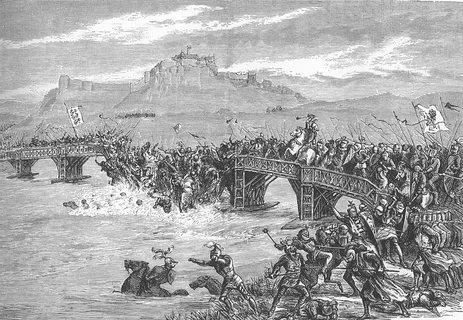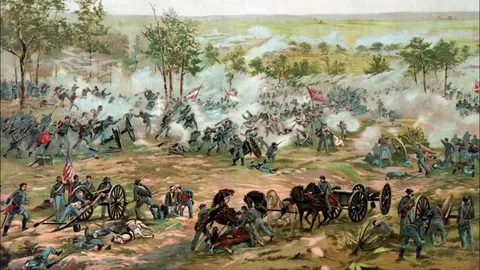The Battle of Hamraa’ Al-Asad occupies a distinctive place in the early history of Islam. Though not one of the bloodiest or most prominent battles, its psychological and strategic significance was immense, occurring in the immediate aftermath of the devastating Battle of Uhud in 3 Hijri (625 CE). This narrative explores the context, events, and outcomes of this encounter, followed by a conclusion and a set of frequently asked questions for comprehensive understanding.
Historical Context
Just a day before the events at Hamraa’ Al-Asad, the Muslim community in Medina faced a major setback at the Battle of Uhud. Although they initially had the upper hand, the tide turned, resulting in severe losses for the Muslims and a strategic withdrawal by the Quraysh forces. The Meccan army, led by Abu Sufyan, believed they had broken Muslim resolve—yet they did not pursue their advantage further. As the Muslims were tending their wounds and grieving their martyrs, a new threat loomed: the possibility that the Quraysh might reconsider, return to Medina, and attempt to destroy the emerging Muslim state for good.
The battle of Hamraa’ Al-Asad

In this session of high anxiety and vulnerability, Prophet Muhammad (ﷺ) displayed remarkable leadership. He instructed Bilal al-Habashi to proclaim that only those who had participated at Uhud should join him for another expedition. Severely wounded and emotionally exhausted, the survivors heeded the call, exemplifying tremendous resolve and collective spirit. Some reports suggest as few as sixty to seventy Muslims set out, including those who sustained grave injuries at Uhud. Notably, Jabir ibn ‘Abd Allah al-Ansari, who missed Uhud but requested to join, was granted permission.
The Army’s Composition
Despite their condition, forty members of the tribe Banu Salama, badly injured, accompanied the Prophet. Some, lacking even means of transportation, journeyed on foot. The Prophet entrusted the battle standard to ‘Ali ibn Abi Talib (according to some reports, to Abu Bakr), prayed at the mosque, and then advanced with his force toward Hamraa’ Al-Asad, roughly 20 kilometers south of Medina.
Strategic Maneuvering at Hamraa’ Al-Asad
When the Muslims arrived at Hamraa’ Al-Asad, they employed clever psychological tactics. Under the Prophet’s direction, they lit around 500 campfires across the hills at night. The fires, visible from a distance, created the impression that a large reinforced army had emerged from Medina, ready to face any incursion by Quraysh and their allies. This show of force was crucial in sending a message about the Muslims’ resilience and preparedness, even after apparent defeat.
Read more: The battle of the Amr (3 Hijri).
Espionage and Misinformation
During the camp at Hamraa’ Al-Asad, a man named Ma’bad al-Khuza’ah, who was allied with the Muslims, approached the Quraysh leader, Abu Sufyan, and delivered a fabricated report—he told him that Muhammad had mobilized a vast and determined army, eager for revenge. Fearing heavy losses and realizing the Muslims were apparently far from broken, Abu Sufyan and his generals decided against carrying out their original plan to attack Medina. Instead, they completed their withdrawal, believing the potential risks outweighed any possible gains.
The Quraysh Response
Having halted at Ar-Rawha’, a place short of Medina, the Quraysh debated whether to turn back for one final assault. Some pressed that they had not truly achieved victory and should finish what they started, but others, influenced by the report brought by Ma’bad and the psychological ploys at Hamraa’ Al-Asad, counseled caution. Ultimately, Abu Sufyan heeded the warnings and led his army back to Mecca, missing the opportunity to exploit their earlier success at Uhud.
The Muslim Victory—Without Combat
Notably, the expedition to Hamraa’ Al-Asad ended without the actual engagement of armies. The sight of the campfires and the intelligence brought to Abu Sufyan led to strategic retreat by Meccan forces. The Muslims returned to Medina without direct fighting—but with a morale-boosting psychological victory that showed both their adversaries and themselves that they were not defeated, despite recent losses.
The Quranic Endorsement
The episode is referenced in the Qur’an: “Those who answered (the Call of) Allah and the Messenger after being wounded…” (Qur’an 3:172). This verse underscores not just the physical courage, but also the steadfast obedience and spiritual resilience of the wounded warriors who responded to the Prophet’s call.
Read about: The battle of Badr (2 Hijri)
Significance of the Battle
The Battle of Hamraa’ Al-Asad reinforced several key points:
-
Leadership & Resolve: It highlighted the Prophet’s ability to inspire confidence and act decisively even in periods of crisis.
-
Community Spirit: Despite injuries and grief, the Muslim community demonstrated unity, steadfastness, and willingness to defend their nascent state.
-
Deterrence: The expedition served as a warning to the Quraysh and other hostile tribes that Medina was not weakened and would not succumb to psychological intimidation or military threats.
-
Moral Recovery: The Muslims, having sustained heavy losses at Uhud, regained self-assurance and external prestige, which would serve them in future confrontations.
FAQs
Where did the Battle of Hamraa' Al-Asad take place?
It occurred at Hamraa' Al-Asad, a location about 20 kilometers south of Medina in present-day Saudi Arabia.
Why did the Prophet organize an expedition right after the defeat at Uhud?
Prophet Muhammad sought to deter the Quraysh from mounting another attack on Medina. By quickly mobilizing his injured and tired troops, he demonstrated that the Muslims were still united and prepared, making their enemies reconsider further aggression.
Was there any actual fighting at Hamraa' Al-Asad?
No direct combat took place. The battle’s outcome was achieved through psychological tactics and strategic maneuvering, which convinced the Quraysh to retreat without engaging the Muslim forces.
Who participated in the expedition to Hamraa' Al-Asad?
Prophet Muhammad selected only those who had fought at Uhud to join the expedition. Most participants were recovering from injuries, and only one, Jabir ibn 'Abd Allah al-Ansari, was allowed to join despite missing Uhud.
What is the legacy of the Battle of Hamraa' Al-Asad?
The encounter is remembered as a classic example of leadership, morale restoration, and psychological warfare. It is documented in Islamic traditions and the Qur’an as a moment when the Muslims—despite adversity—remained steadfast, assertive, and unified in purpose.
Conclusion
The Battle of Hamraa’ Al-Asad, while often overshadowed by the major battles of early Islamic history, was a turning point in the psychological and strategic landscape of the Arabian Peninsula. It prevented the Quraysh from capitalizing on their apparent victory at Uhud, restored Muslim morale, and affirmed the Prophet Muhammad’s leadership. Ultimately, the events at Hamraa’ Al-Asad sent a resounding message: the Muslim community, forged by adversity, was prepared to persist with resilience, patience, and ingenuity. No blood was shed in this encounter, yet its ramifications rippled across the ensuing years, fortifying the position of Islam at Medina.

